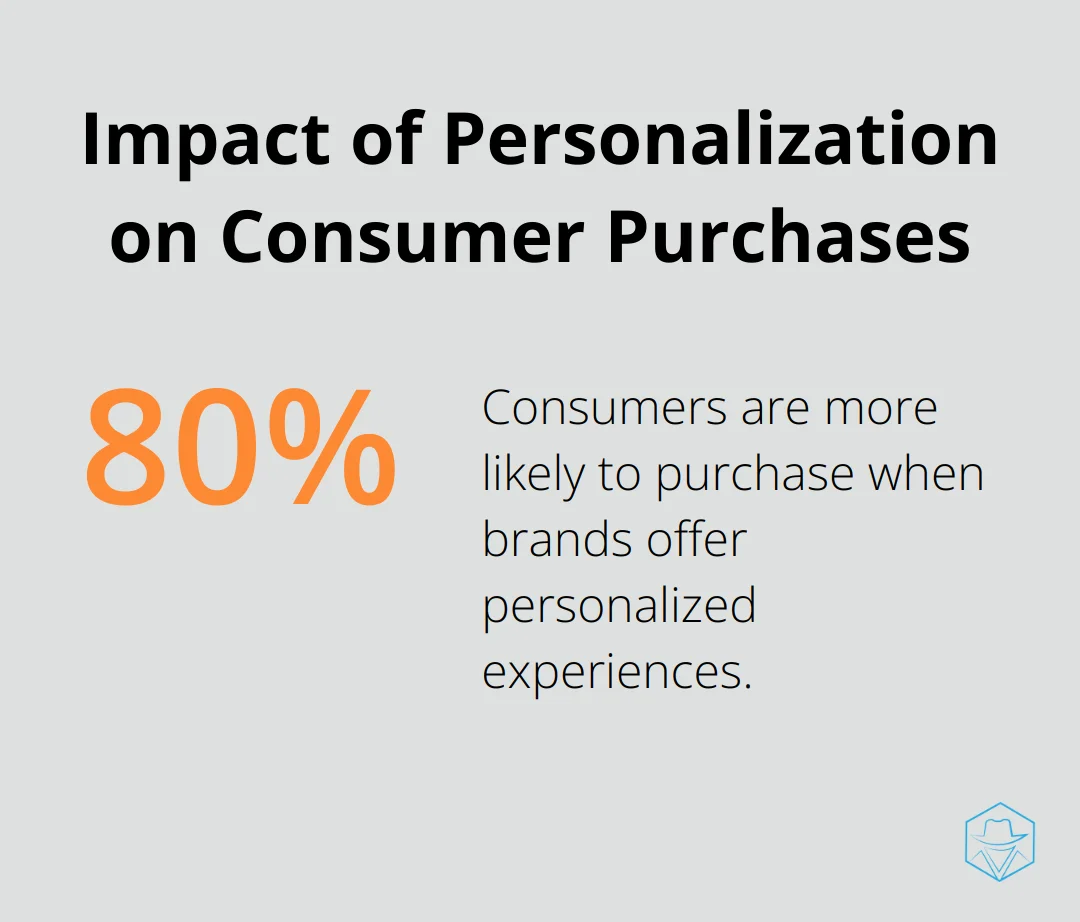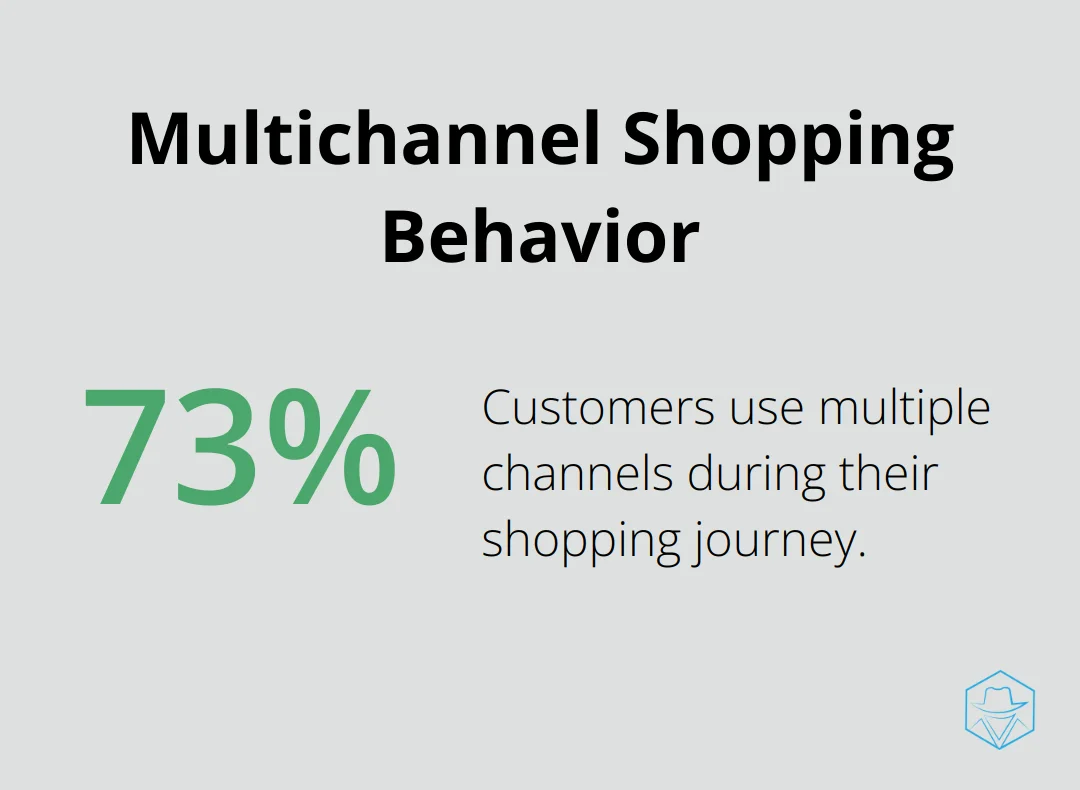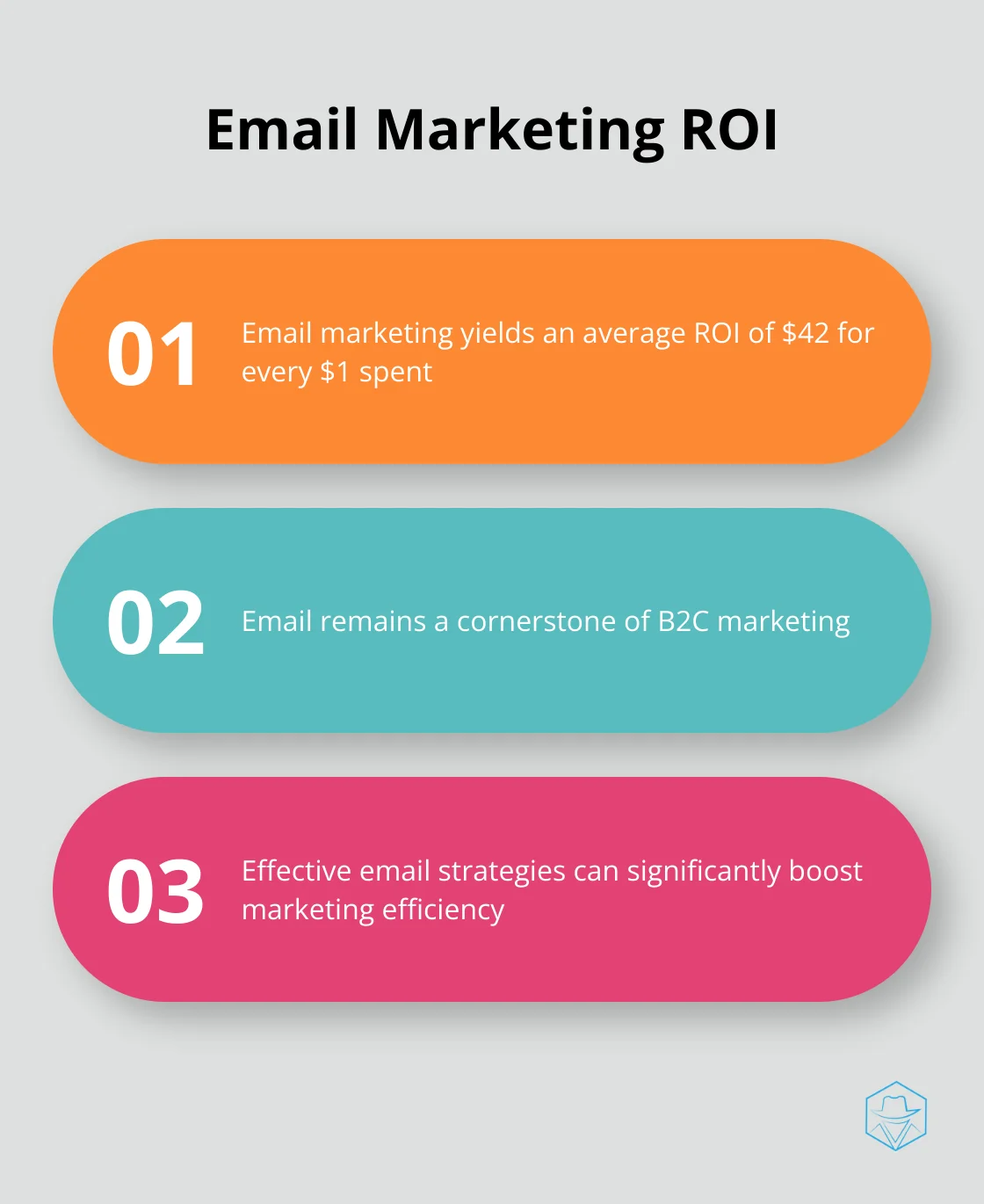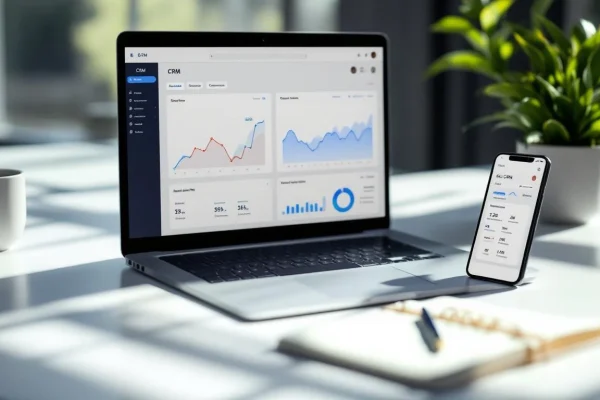B2C Marketing Automation: Drive Customer Loyalty

B2C marketing automation is revolutionizing how businesses interact with their customers. At Drop Cowboy, we’ve seen firsthand how this technology can transform customer relationships and drive loyalty.
In this post, we’ll explore the key strategies and tools that make B2C marketing automation so powerful. We’ll also show you how to implement these techniques to boost your customer engagement and sales.
What Is B2C Marketing Automation?
The Essence of B2C Marketing Automation
B2C marketing automation transforms how businesses interact with customers. It uses software to automate repetitive marketing tasks and deliver personalized experiences to consumers at scale. This technology captures, analyzes, and acts on customer data, including website visits, purchase history, and engagement with marketing materials. A study by Epsilon revealed that 80% of consumers are more likely to purchase when brands offer personalized experiences.

Key Components
Email Automation
Email automation allows businesses to send targeted messages based on specific triggers or customer behaviors. A report by Campaign Monitor shows that automated emails generate 320% more revenue than non-automated emails.
Customer Segmentation
This involves dividing your audience into groups based on shared characteristics, enabling more targeted marketing efforts. McKinsey research indicates that companies using advanced personalization techniques see revenue increases of 15-20%.
B2C vs. B2B Marketing Automation
B2C and B2B marketing automation differ significantly in approach and execution. B2C typically focuses on:
- Shorter sales cycles
- More emotional decision-making processes
- Immediate conversions and impulse purchases
- Quick, engaging content (HubSpot reports a 50% increase in leads for B2C companies when increasing landing pages from 10 to 15)
B2B marketing automation often deals with longer sales cycles and multiple decision-makers, requiring a more nurturing approach focused on education and trust-building.
Benefits for Businesses and Customers
For businesses, B2C marketing automation offers substantial benefits:
- More efficient use of resources
- Increased focus on strategy (Nucleus Research found a 14.5% increase in sales productivity)
Customers also benefit from well-implemented marketing automation:
- More relevant, timely communications
- Offers tailored to their interests and behaviors
- Improved satisfaction and loyalty (Salesforce reports 52% of consumers are likely to switch brands if a company doesn’t personalize communications)
Technological Advancements
The role of AI and machine learning in B2C marketing automation continues to grow. These technologies enable more sophisticated personalization and predictive analytics, allowing businesses to anticipate customer needs proactively.
Platforms like Drop Cowboy (with features such as Mimic AI™ for voice cloning) showcase how advanced automation capabilities can significantly enhance customer engagement. These tools empower businesses to create more personalized and effective marketing campaigns that resonate with their audience.
As we move forward, the next chapter will explore strategies for effective B2C marketing automation, building on the foundation we’ve established here.
How to Implement Effective B2C Marketing Automation
Personalization at Scale
Personalization stands as a cornerstone of successful B2C marketing. A study by Epsilon reveals that 80% of consumers are more likely to purchase when brands offer personalized experiences. To achieve this at scale, businesses must employ sophisticated segmentation techniques.
Divide your audience into distinct groups based on behaviors, preferences, and demographics. This allows you to tailor your messaging to resonate with each segment. For example, a clothing retailer might segment customers by style preference, purchase frequency, and average order value.
Dynamic content insertion tools can automatically customize email content, product recommendations, and website experiences based on these segments. This level of personalization often leads to significant improvements in engagement and conversion rates.
Multichannel Campaign Orchestration
Modern consumers interact with brands across multiple touchpoints. A Harvard Business Review study found that 73% of customers use multiple channels during their shopping journey. This fact underscores the importance of multichannel campaign orchestration for B2C marketing success.

Map out the various channels your customers use – email, SMS, social media, web, and voice messages. Create a cohesive strategy that delivers consistent messaging across these channels. For instance, a customer who abandons their cart might receive an email reminder, followed by a targeted social media ad, and finally an SMS with a limited-time discount.
Behavioral Triggers and Predictive Analytics
Behavioral triggers serve as powerful tools in B2C marketing automation. These predefined actions trigger specific marketing responses. When a customer views a product multiple times without purchasing, it might trigger a personalized email with more information or a special offer.
Predictive analytics takes this approach further by using historical data to forecast future behaviors. This allows marketers to proactively engage customers before they take action. For example, if data shows that customers typically make a second purchase within 30 days of their first, you can set up an automated campaign to encourage this behavior.
A McKinsey study found that companies using advanced analytics for marketing see a 15-20% increase in ROI. This finding highlights the importance of incorporating these techniques into your B2C marketing automation strategy.
Customer Journey Optimization
Understanding and optimizing the customer journey is essential for effective B2C marketing automation. This process involves mapping out every touchpoint a customer has with your brand, from initial awareness to post-purchase support.
Use customer journey mapping software to visualize this process. Identify key moments where automation can enhance the experience. You might set up an automated onboarding series for new customers or a re-engagement campaign for customers who haven’t made a purchase in a while.
Continuously analyze and refine your customer journey. A/B testing different messages, offers, and timings can help you optimize each touchpoint for maximum impact.
The implementation of these strategies requires the right tools and a data-driven approach. In the next section, we’ll explore the essential tools and technologies that power effective B2C marketing automation (including platforms like Drop Cowboy, which offers integrated SMS and ringless voicemail capabilities).
Essential Tools for B2C Marketing Automation
B2C marketing automation requires powerful tools to connect effectively with customers. We will explore the technologies that reshape how businesses interact with their audience.
Email Marketing Platforms
Email remains a cornerstone of B2C marketing. Modern platforms like Mailchimp and Klaviyo offer advanced segmentation capabilities. Marketers can slice their audience based on behavior, preferences, and purchase history. These platforms also provide A/B testing features, which enable data-driven optimization of subject lines, content, and send times.
A study by Litmus found that email marketing yields an average ROI of $42 for every $1 spent (making it an indispensable component of any B2C strategy). When selecting an email platform, look for features like dynamic content insertion, which can boost click-through rates by up to 14% according to Experian.

Social Media Management Tools
Social media plays a vital role in B2C marketing. Automation tools can significantly enhance efficiency and reach. Platforms like Hootsuite and Sprout Social allow businesses to schedule posts across multiple networks, track engagement, and respond to customer inquiries from a centralized dashboard.
These tools often include features for content curation and analytics, which help marketers identify the most effective types of posts for their audience. According to Sprout Social, 89% of consumers say they will buy from a brand they follow on social media (underscoring the importance of a strong, consistent social presence).
CRM Systems
Customer Relationship Management (CRM) systems form the backbone of effective B2C marketing automation. Platforms like Salesforce and HubSpot integrate customer data from multiple touchpoints, which provides a 360-degree view of each individual. This comprehensive data allows for highly targeted marketing efforts and personalized customer experiences.
A Nucleus Research study found that CRM applications deliver an average of $8.71 for every dollar spent. When choosing a CRM, prioritize systems that offer robust integration capabilities with your existing marketing stack.
AI-Powered Chatbots and Virtual Assistants
Artificial Intelligence revolutionizes customer interactions through chatbots and virtual assistants. These tools can handle a wide range of customer inquiries, which frees up human resources for more complex tasks. Platforms like Intercom and Drift offer AI-powered chatbots that can qualify leads, answer FAQs, and even facilitate purchases.
According to a study by Juniper Research, chatbots will save businesses $8 billion annually by 2022. When implementing chatbots, focus on creating natural, conversational experiences that align with your brand voice.
Analytics and Reporting Solutions
Data-driven decision making is essential in B2C marketing automation. Tools like Google Analytics and Mixpanel provide deep insights into customer behavior, campaign performance, and ROI. These platforms allow marketers to track key metrics across channels and attribute conversions accurately.
A survey by Forrester found that 74% of firms say they want to be data-driven, but only 29% are actually successful at connecting analytics to action. When selecting analytics tools, prioritize those that offer clear, actionable insights and integrate seamlessly with your other marketing platforms.
While these individual tools are powerful, an integrated approach often yields the best results. Platforms like Drop Cowboy offer a comprehensive solution, which combines SMS, ringless voicemail, and voice cloning capabilities. This integrated approach can significantly streamline your marketing efforts and provide a more cohesive customer experience.
Final Thoughts
B2C marketing automation has transformed customer engagement, offering personalized experiences at scale. Companies now create tailored interactions that resonate with their audience, which drives loyalty and increases sales. The future of B2C marketing automation will integrate AI and machine learning for more sophisticated analytics and personalization across all channels.
Businesses should assess their current marketing processes to identify improvement areas. They must define clear goals and select the right tools to support their strategy. Drop Cowboy offers comprehensive solutions that combine SMS, ringless voicemail, and voice cloning capabilities (providing a solid foundation for automation efforts).
Success in B2C marketing automation depends on quality customer data and continuous optimization. Companies should implement robust tracking systems and capture relevant information at every touchpoint. Regular performance reviews and adaptability will ensure long-term success in an increasingly competitive marketplace.
blog-dropcowboy-com
Related posts

April 17, 2025
Marketing Automation Strategy: Key Elements to Consider
Boost your marketing-automation-strategy by exploring key elements that enhance efficiency, drive engagement, and increase ROI.

June 10, 2025
Affinity CRM Pricing: Is It Worth the Investment?
Explore Affinity CRM pricing and determine if it delivers value for your business with our detailed cost-benefit analysis and practical tips.

July 20, 2025
Trumpia Texting: Features and Benefits for Businesses
Explore Trumpia Texting for businesses: boost engagement, streamline communication, and enhance customer relationships easily with this powerful tool.

August 11, 2025
Mass voicemail
Explore the impact of mass voicemail, a tool for businesses to connect efficiently, drive engagement, and boost communication strategies.

March 7, 2025
Text Marketing Best Practices: A Comprehensive Guide
Explore text marketing best practices with practical tips, tools, and data to boost engagement and drive successful campaigns. Maximize your strategy now!

March 8, 2025
Key Benefits of Text Message Marketing
Explore text message marketing benefits to boost engagement, increase conversion rates, and enhance customer communication with proven strategies.